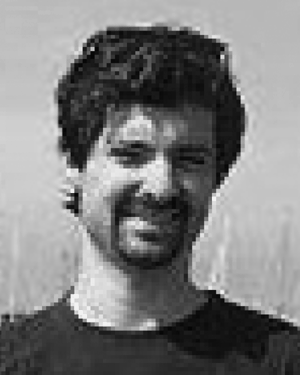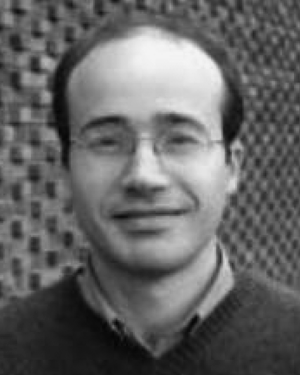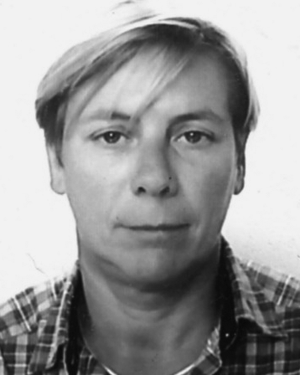Abstract:
In this paper, different methods are proposed for the detection and mitigation of the undesirable effects of radio-frequency interference (RFI) in microwave radiometry. T...Show MoreMetadata
Abstract:
In this paper, different methods are proposed for the detection and mitigation of the undesirable effects of radio-frequency interference (RFI) in microwave radiometry. The first of these makes use of kurtosis to detect the presence of non-Gaussian signals, whereas the second imposes a threshold on the standard deviation of brightness temperatures in order to distinguish natural-emission variations from RFI. Finally, the third approach is based on the use of a threshold applied to the third and fourth Stokes parameters. All these methods have been applied and tested, with the cooperative airborne radiometer for ocean and land studies radiometer operating in the L-band, on the data acquired during airborne campaigns made in the spring of 2009 over the southwest of France. The performance of each approach, or of two combined approaches, is analyzed with our database. We thus show that the kurtosis method is well suited to detect pulsed RFI, whereas the method based on the second moment of brightness temperatures seems to be better suited to detect continuous-wave RFI in airborne brightness-temperature measurements.
Published in: IEEE Transactions on Geoscience and Remote Sensing ( Volume: 49, Issue: 3, March 2011)

Laboratory ATmosphere, Milieu and Spatial Observations (LATMOS)–Centre National de Recherche Scientifique (CNRS), Guyancourt, France
Laboratory ATmosphere, Milieu and Spatial Observations (LATMOS)–Centre National de Recherche Scientifique (CNRS), Guyancourt, France
Michaël Pardé received the M.S. degree in remote sensing and the Ph.D. degree in “méthodes physiques en télédétection” from the Université Denis Diderot (Paris 7), Paris, France, in 1999 and 2003, respectively.
Between 2000 and 2003, he was with the Institut National de Recherche Agronomique (INRA), Avignon, France, and with INRA, Bordeaux, France, on the vegetation effects on the radiometric signal in the framework of the...Show More
Michaël Pardé received the M.S. degree in remote sensing and the Ph.D. degree in “méthodes physiques en télédétection” from the Université Denis Diderot (Paris 7), Paris, France, in 1999 and 2003, respectively.
Between 2000 and 2003, he was with the Institut National de Recherche Agronomique (INRA), Avignon, France, and with INRA, Bordeaux, France, on the vegetation effects on the radiometric signal in the framework of the...View more

Centre ďEtude Spatiale de la Biosphère, Toulouse, France
Centre d Etudes Spatiales de la BIOsphere (CESBIO), Toulouse, France
Mehrez Zribi received the B.S. engineering degree in signal processing from the Ecole Nationale Supérieure d'Ingénieurs en Constructions Aéronautiques (ENSICA), Toulouse, France, and the Ph.D. degree from the Université Paul Sabatier, Toulouse.
In 1995, he was with the CETP Laboratory [IPSL/Centre National de Recherche Scientifique (CNRS)], Vélizy, France. He was with the CNRS in 2001. Since October 2008, he has been with ...Show More
Mehrez Zribi received the B.S. engineering degree in signal processing from the Ecole Nationale Supérieure d'Ingénieurs en Constructions Aéronautiques (ENSICA), Toulouse, France, and the Ph.D. degree from the Université Paul Sabatier, Toulouse.
In 1995, he was with the CETP Laboratory [IPSL/Centre National de Recherche Scientifique (CNRS)], Vélizy, France. He was with the CNRS in 2001. Since October 2008, he has been with ...View more
Laboratory ATmosphere, Milieu and Spatial Observations (LATMOS)–Centre National de Recherche Scientifique (CNRS), Guyancourt, France
Laboratory ATmosphere, Milieu and Spatial Observations (LATMOS)–Centre National de Recherche Scientifique (CNRS), Guyancourt, France
Pascal Fanise photograph and biography not available at the time of publication.
Pascal Fanise photograph and biography not available at the time of publication.View more

Laboratory ATmosphere, Milieu and Spatial Observations (LATMOS)–Centre National de Recherche Scientifique (CNRS), Guyancourt, France
Laboratory ATmosphere, Milieu and Spatial Observations (LATMOS)–Centre National de Recherche Scientifique (CNRS), Guyancourt, France
Monique Dechambre was born in Paris, France. She received the M.S. and Ph.D. in physics from the University of Paris VI, Paris, France, in 1973 and 1977, respectively.
She has been with the Centre National de Recherche Scientifique (CNRS) since 1997 and currently with the Laboratory ATmosphere, Milieu and Spatial Observations (LATMOS), Guyancourt, France, as a Scientist. Her research interests include the applications of a...Show More
Monique Dechambre was born in Paris, France. She received the M.S. and Ph.D. in physics from the University of Paris VI, Paris, France, in 1973 and 1977, respectively.
She has been with the Centre National de Recherche Scientifique (CNRS) since 1997 and currently with the Laboratory ATmosphere, Milieu and Spatial Observations (LATMOS), Guyancourt, France, as a Scientist. Her research interests include the applications of a...View more

Laboratory ATmosphere, Milieu and Spatial Observations (LATMOS)–Centre National de Recherche Scientifique (CNRS), Guyancourt, France
Laboratory ATmosphere, Milieu and Spatial Observations (LATMOS)–Centre National de Recherche Scientifique (CNRS), Guyancourt, France
Michaël Pardé received the M.S. degree in remote sensing and the Ph.D. degree in “méthodes physiques en télédétection” from the Université Denis Diderot (Paris 7), Paris, France, in 1999 and 2003, respectively.
Between 2000 and 2003, he was with the Institut National de Recherche Agronomique (INRA), Avignon, France, and with INRA, Bordeaux, France, on the vegetation effects on the radiometric signal in the framework of the SMOS project. In 2004 he was a Postdoctoral Researcher with the Centre d'Applications et de Recherches en Télédétection (CARTEL) Laboratory, Université de Sherbrooke, Sherbrooke, QC, Canada, and worked on the estimation of snow-water equivalent using satellite measurements of surface microwave emission. Since 2007, he has been with the Laboratory ATmosphere, Milieu and Spatial Observations, Guyancourt, France, on airborne brightness temperature measurements of surface. His interest includes surface-parameter estimation using passive and radar microwave remote sensing, mainly in the context of hydrology.
Michaël Pardé received the M.S. degree in remote sensing and the Ph.D. degree in “méthodes physiques en télédétection” from the Université Denis Diderot (Paris 7), Paris, France, in 1999 and 2003, respectively.
Between 2000 and 2003, he was with the Institut National de Recherche Agronomique (INRA), Avignon, France, and with INRA, Bordeaux, France, on the vegetation effects on the radiometric signal in the framework of the SMOS project. In 2004 he was a Postdoctoral Researcher with the Centre d'Applications et de Recherches en Télédétection (CARTEL) Laboratory, Université de Sherbrooke, Sherbrooke, QC, Canada, and worked on the estimation of snow-water equivalent using satellite measurements of surface microwave emission. Since 2007, he has been with the Laboratory ATmosphere, Milieu and Spatial Observations, Guyancourt, France, on airborne brightness temperature measurements of surface. His interest includes surface-parameter estimation using passive and radar microwave remote sensing, mainly in the context of hydrology.View more

Centre ďEtude Spatiale de la Biosphère, Toulouse, France
Centre d Etudes Spatiales de la BIOsphere (CESBIO), Toulouse, France
Mehrez Zribi received the B.S. engineering degree in signal processing from the Ecole Nationale Supérieure d'Ingénieurs en Constructions Aéronautiques (ENSICA), Toulouse, France, and the Ph.D. degree from the Université Paul Sabatier, Toulouse.
In 1995, he was with the CETP Laboratory [IPSL/Centre National de Recherche Scientifique (CNRS)], Vélizy, France. He was with the CNRS in 2001. Since October 2008, he has been with the CESBIO Laboratory and Institut de Recherche pour le Développement (IRD). His research interests include microwave remote sensing applied to hydrology and microwave modeling.
Mehrez Zribi received the B.S. engineering degree in signal processing from the Ecole Nationale Supérieure d'Ingénieurs en Constructions Aéronautiques (ENSICA), Toulouse, France, and the Ph.D. degree from the Université Paul Sabatier, Toulouse.
In 1995, he was with the CETP Laboratory [IPSL/Centre National de Recherche Scientifique (CNRS)], Vélizy, France. He was with the CNRS in 2001. Since October 2008, he has been with the CESBIO Laboratory and Institut de Recherche pour le Développement (IRD). His research interests include microwave remote sensing applied to hydrology and microwave modeling.View more
Laboratory ATmosphere, Milieu and Spatial Observations (LATMOS)–Centre National de Recherche Scientifique (CNRS), Guyancourt, France
Laboratory ATmosphere, Milieu and Spatial Observations (LATMOS)–Centre National de Recherche Scientifique (CNRS), Guyancourt, France
Pascal Fanise photograph and biography not available at the time of publication.
Pascal Fanise photograph and biography not available at the time of publication.View more

Laboratory ATmosphere, Milieu and Spatial Observations (LATMOS)–Centre National de Recherche Scientifique (CNRS), Guyancourt, France
Laboratory ATmosphere, Milieu and Spatial Observations (LATMOS)–Centre National de Recherche Scientifique (CNRS), Guyancourt, France
Monique Dechambre was born in Paris, France. She received the M.S. and Ph.D. in physics from the University of Paris VI, Paris, France, in 1973 and 1977, respectively.
She has been with the Centre National de Recherche Scientifique (CNRS) since 1997 and currently with the Laboratory ATmosphere, Milieu and Spatial Observations (LATMOS), Guyancourt, France, as a Scientist. Her research interests include the applications of active microwave remote sensing to the study of the land-surface processes for vegetation monitoring with an emphasis on forestry applications.
Monique Dechambre was born in Paris, France. She received the M.S. and Ph.D. in physics from the University of Paris VI, Paris, France, in 1973 and 1977, respectively.
She has been with the Centre National de Recherche Scientifique (CNRS) since 1997 and currently with the Laboratory ATmosphere, Milieu and Spatial Observations (LATMOS), Guyancourt, France, as a Scientist. Her research interests include the applications of active microwave remote sensing to the study of the land-surface processes for vegetation monitoring with an emphasis on forestry applications.View more


